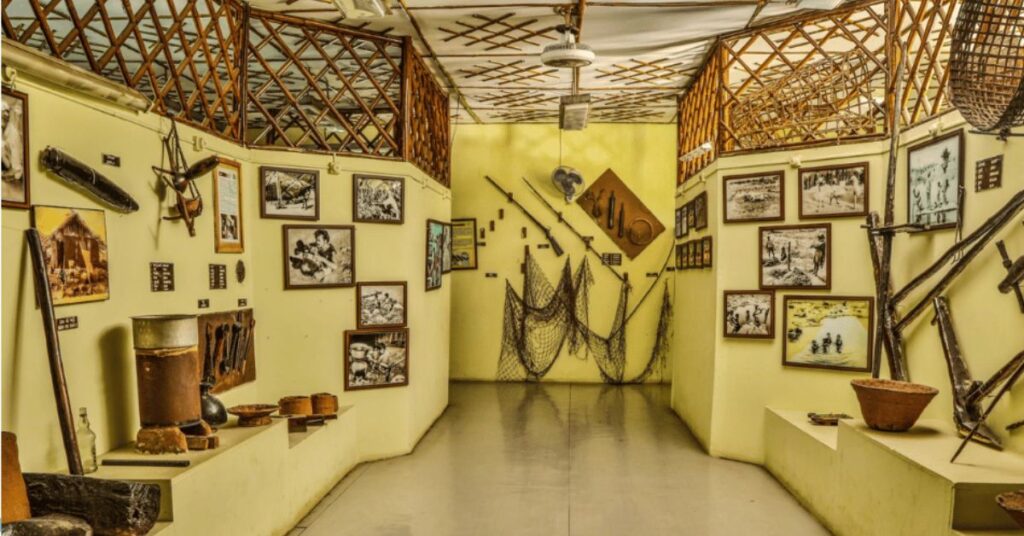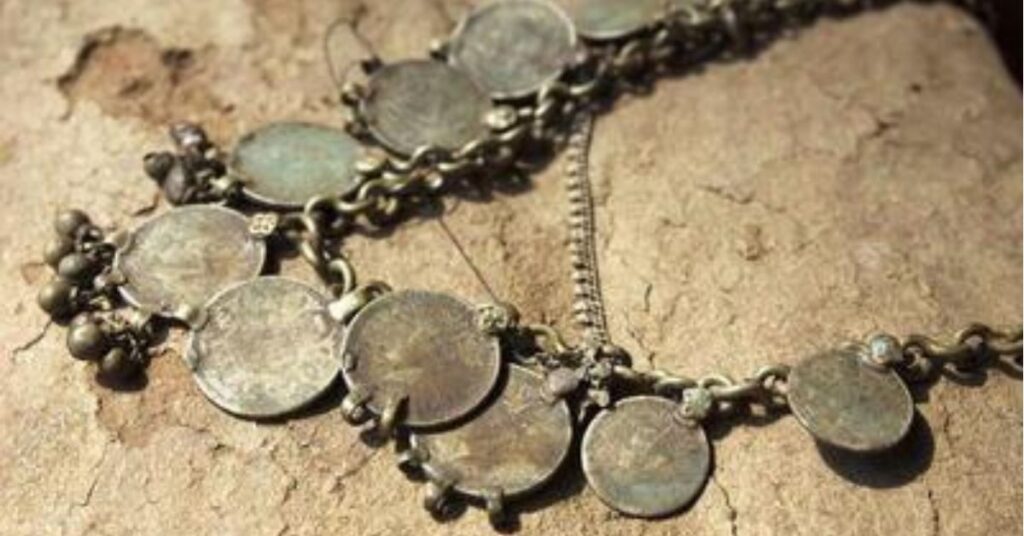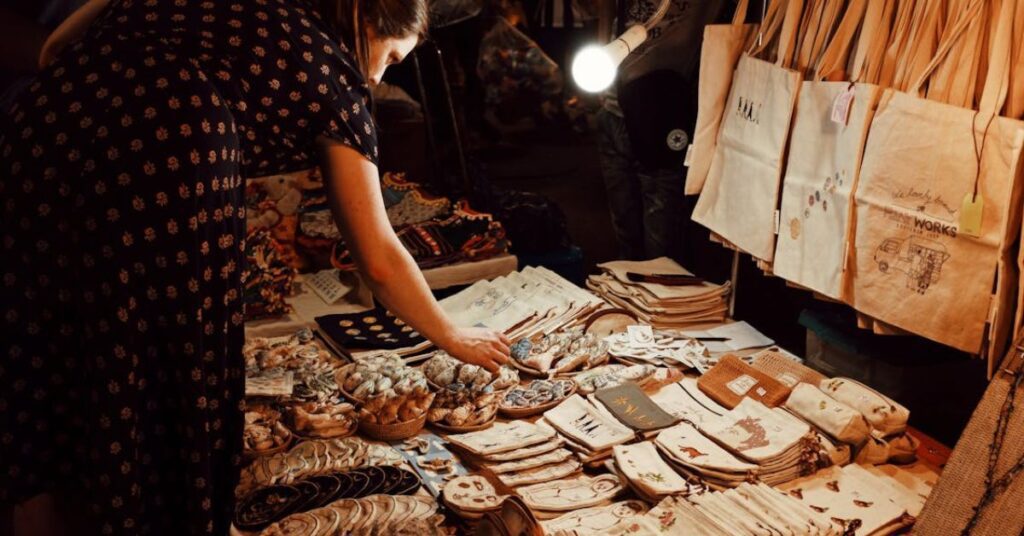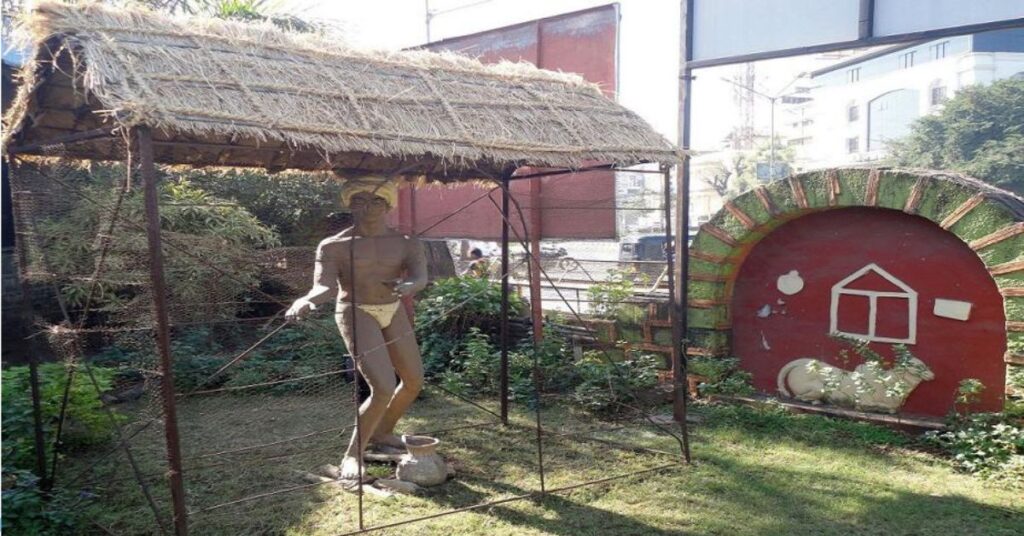The Tribal Cultural Museum in Dadra and Nagar Haveli is a window into a fascinating world. It’s like stepping back in time to learn about the amazing people who live there. The museum is full of colorful things they made, like clothes and tools. You can see how they lived and what was important to them. It’s like reading a story about their lives through the things they left behind.
How to reach:
By Air:
The nearest airport is Surat, approximately 130 kilometers away. From there, hire a taxi or pre-booked cab for a 2.5 to 3-hour journey to the museum.
By Train:
Vapi Railway Station, about 18 kilometers from the museum, is the closest major railhead. Take a taxi or local bus from Vapi, a 30 to 40-minute ride.
By Road:
- From Mumbai: Drive for approximately 3.5 to 4 hours via the Mumbai-Ahmedabad Highway (NH48), covering 180 kilometers.
- From Surat: The journey takes around 2.5 to 3 hours via NH48, covering 130 kilometers.
Local Transportation:
Within Dadra and Nagar Haveli, taxis, auto-rickshaws, and buses are available for local travel to the museum.
By Bus:
State and private buses connect major cities like Mumbai, Surat, and Vapi to Dadra and Nagar Haveli. Alight at Silvassa, the capital, and use local transportation to reach the museum.
Best time to visit:
Winter (November to February)
Winter is the most pleasant season for a visit, with comfortable temperatures between 15°C and 25°C. Enjoy exploring the museum and the region without the heat and humidity.
Monsoon (June to September)
While the monsoon brings heavy rain and lush greenery, it’s best for those who don’t mind the wet weather. Be prepared for showers and plan indoor activities.
Summer (March to May)
Summer offers fewer crowds but comes with high temperatures, often reaching 38°C. Stay hydrated and visit during cooler morning or evening hours.
Attractions:
Traditional Artifacts:

The Tribal Cultural Museum is like a time capsule filled with amazing things made by local tribes. You can see tools, weapons, and dishes they used for hunting, growing food, and cooking. These items show how clever and creative they were to survive in their world. Some tools are made of wood and have beautiful carvings, while others are made of clay and shaped into pots and pans. It’s like looking at a history book and seeing how people lived long ago, but through real objects they touched and used every day.
Tribal Costumes and Jewelry:

The museum has a special section showing off how the local tribes dress up and what kind of jewelry they wear. Their clothes are really cool, made from natural things and dyed with colors from plants. Each tribe has its own special style, with beautiful patterns and designs. The jewelry is amazing too, with beads, shells, and metal pieces. Every necklace, earring, or bracelet has a story to tell, like about important life events or who is important in the tribe. It’s like looking at a colorful picture book that teaches you about the tribes and what they think is beautiful.
Handicrafts and Textiles:

The museum has a special area where you can see amazing things made by the tribes. They have beautiful cloth with fancy patterns, cool baskets, and pretty pots. These things show how clever and creative the tribes are. The patterns on the cloth look like the plants and animals around them, and the baskets and pots are both useful and pretty. It’s like a gallery of their talents, and it’s important to keep these skills alive for everyone to see.
Tribal Huts and Models:

The museum has built real-sized copies of the homes where the tribes used to live. These houses are made just like the real ones, using things like bamboo, grass, and mud. You can walk around inside and see how people lived, with their beds, tables, and other stuff. It’s like stepping back in time and seeing how smart the tribes were to build homes that worked with the weather.
Local Experiences:
- Learn a new skill: Try your hand at weaving, pottery, or basket making with local artisans.
- Taste the local flavors: Savor traditional dishes made with fresh, local ingredients.
- Join the celebration: Experience the vibrant energy of tribal dances and music.
- Discover local life: Visit nearby villages to understand daily life and customs.
- Witness traditions: Participate in colorful tribal festivals and rituals.
- Connect with artisans: Learn about their craft and the stories behind their work.
- Explore the past: Listen to ancient tales and legends from tribal elders.
- Uncover history: Take a guided tour to learn about the tribes’ rich heritage.
- Connect with nature: Enjoy the outdoors while learning about traditional practices.
- Learn and perform: Discover the rhythms and movements of tribal music and dance.
- Give back: Volunteer to support the preservation of tribal culture.
Travel tips:
Check the details: Find out the museum’s opening hours and if there are any special events happening.
Dress comfortably: Wear loose clothes and good walking shoes, as you’ll be doing a lot of exploring.
Stay hydrated: Bring water, especially if it’s hot.
Respect the culture: Learn about local customs and be mindful of them. Don’t touch anything without permission.
Check photo rules: Some places might not allow pictures, so ask first.
Consider a guide: A local guide can share lots of interesting information.
Learn some local words: Even a few basic phrases can help you connect with people.
Take care of yourself: Bring necessary medicines and a small first-aid kit.
Bring cash: Some places might not take cards, so it’s good to have cash.
Protect the environment: Avoid littering and use reusable things.
Book transport: Arrange your travel to and from the museum in advance.
Stay informed: Check the news and weather to be prepared for anything.
Be ready: Save important phone numbers in case of emergencies.
Conclusion
Discover the vibrant heritage of Dadra and Nagar Haveli’s indigenous tribes at the Tribal Cultural Museum. This isn’t just a museum; it’s a window into a world rich with tradition, lifestyle, and artistic expression. Explore intricate crafts, fascinating artifacts, and lively cultural performances that reveal the region’s history. Xplro.com guides you through this journey, helping you plan your visit, respect local customs, and connect with the enduring spirit of these communities. Immerse yourself in a harmonious blend of nature and tradition, and create lasting memories of this extraordinary cultural experience.
FAQs
1. What is the Tribal Cultural Museum?
- The Tribal Cultural Museum in Dadra and Nagar Haveli is dedicated to preserving and exhibiting the cultural heritage, traditions, and lifestyles of the region’s indigenous tribal communities.
2. Where is the Tribal Cultural Museum located?
- The Tribal Cultural Museummuseum is situated in Silvassa, the capital city of Dadra and Nagar Haveli.
3. What are the museum’s opening hours?
- The Tribal Cultural Museum is usually open from 9:00 AM to 6:00 PM, Tuesday to Sunday, and is closed on Mondays and public holidays. It’s best to check the official timings before planning your visit.
4. Is there an entry fee for the museum?
- Yes, there is a small entry fee for visitors. The fee may vary for adults, children, and international tourists. For the latest fee structure, check the museum’s website or contact them directly.
5. What can I expect to see at the museum?
- Visitors can explore exhibits of traditional artifacts, tribal costumes, jewelry, handicrafts, textiles, musical instruments, and detailed documentation of tribal customs and rituals.
6. Are guided tours available?
- Yes, the Tribal Cultural Museum offers guided tours. These tours provide detailed information about the exhibits and the cultural significance of the artifacts.
7. Can I take photographs inside the museum?
- Photography policies may vary. Some areas might restrict photography to preserve the artifacts. It’s best to check with the museum staff about the specific photography guidelines.
8. Are there interactive exhibits?
- Yes, the Tribal Cultural Museum features interactive displays and multimedia presentations that provide engaging and informative content about the tribal communities and their heritage.
9. Does the museum offer workshops or educational programs?
- The Tribal Cultural Museum regularly conducts workshops and educational programs focused on traditional crafts, music, and cultural studies. These are designed for students, researchers, and visitors interested in learning more about tribal culture.
10. What is the ideal time to visit the museum?
- The best time to visit Tribal Cultural Museum is during the cooler months from November to February when the weather is pleasant for exploring both the museum and the surrounding areas.
11. Is the museum accessible for people with disabilities?
- Tribal Cultural Museum aims to be accessible to all visitors, including those with disabilities. However, it’s recommended to contact the museum in advance to inquire about specific accessibility features and assistance.
12. How can I get to the Tribal Cultural Museum?
- Tribal Cultural Museum is accessible by air, train, and road. The nearest airport is Surat Airport, the nearest major railway station is Vapi Railway Station, and it’s well-connected by road from major cities like Mumbai and Surat. Local transportation options include taxis, auto-rickshaws, and buses.






